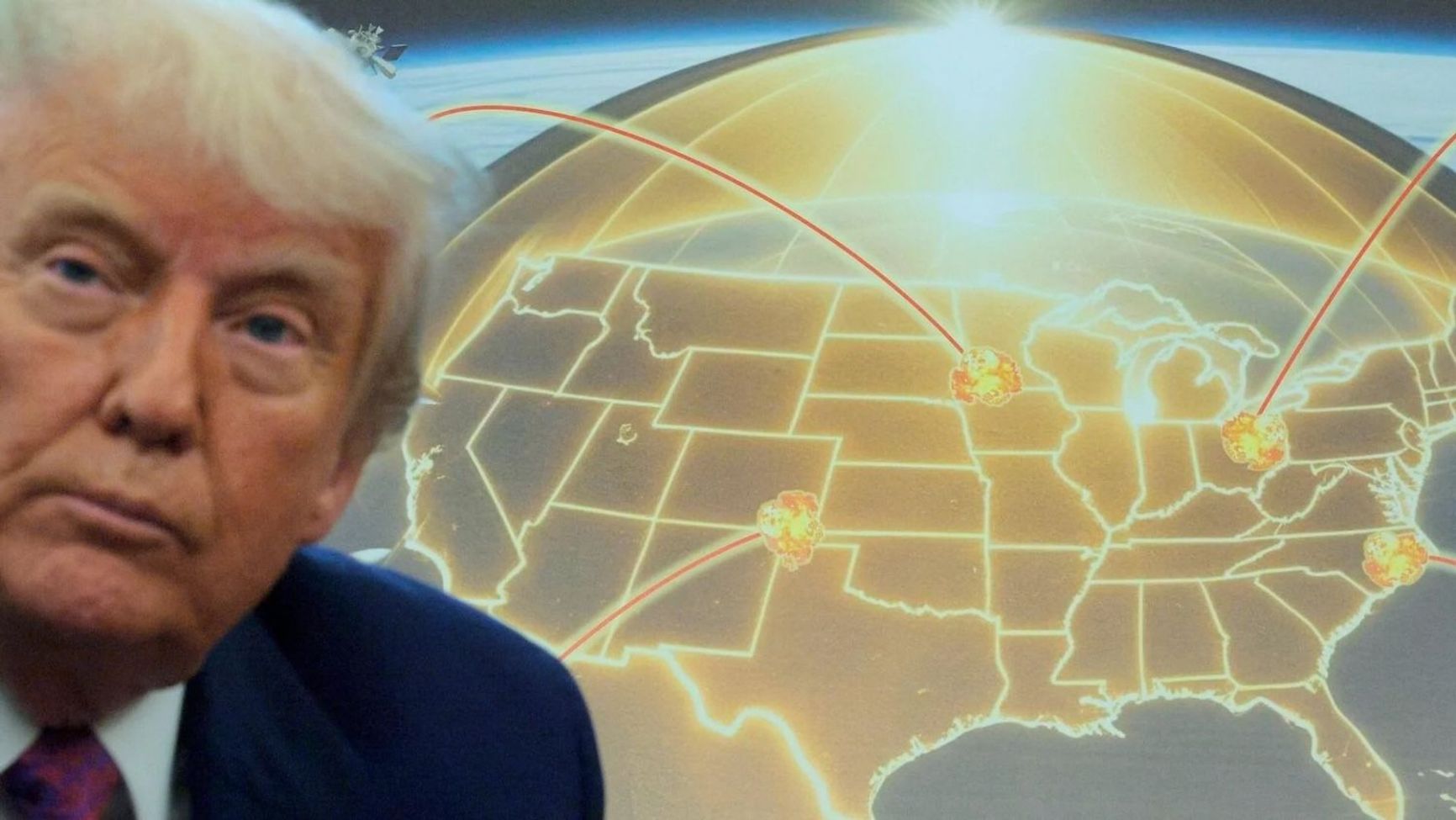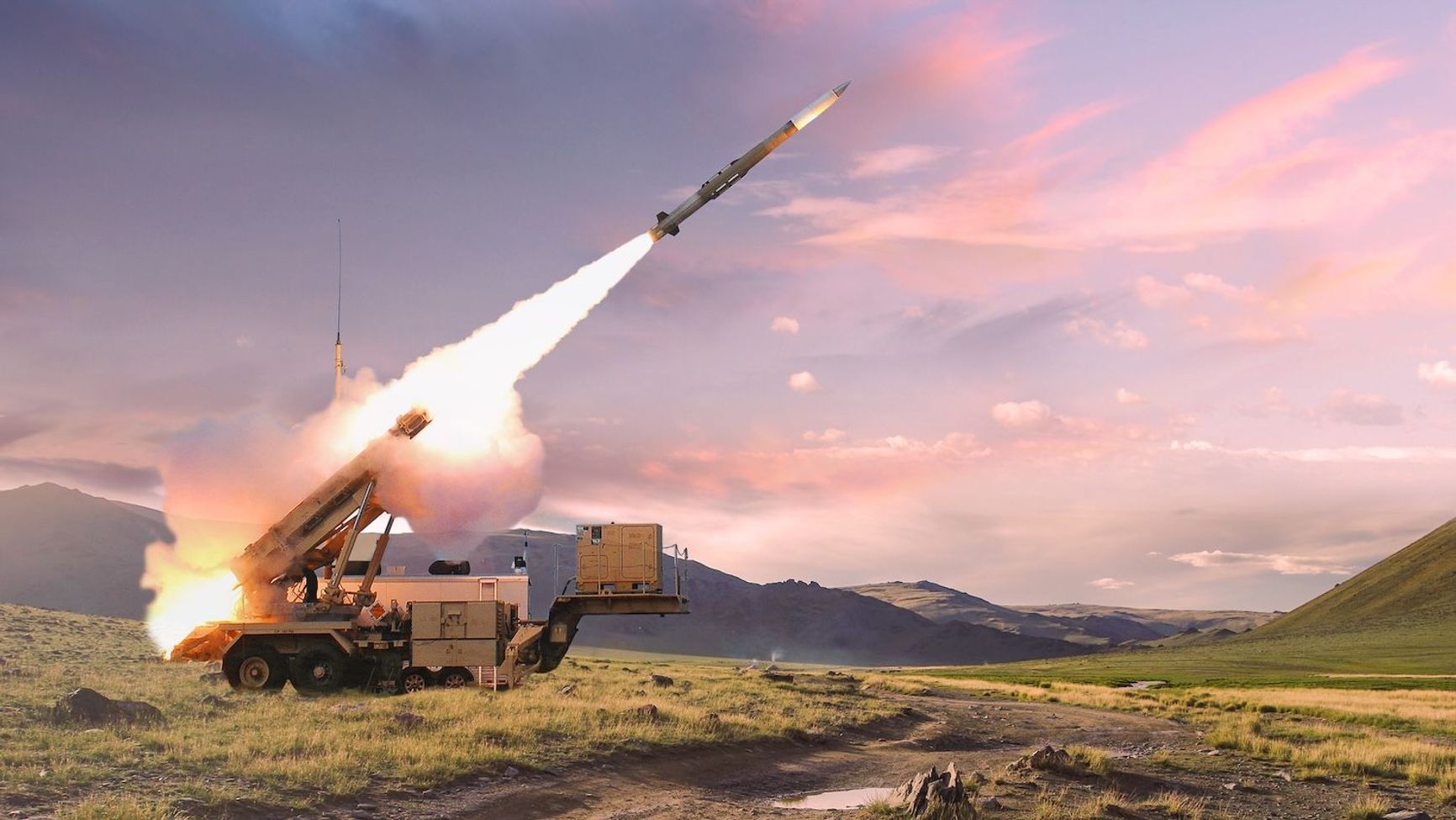On May 20, Donald Trump announced his plan for creating the “Golden Dome” — a missile defense system that, according to the president’s projections, will cost $200 billion and can be deployed by the end of his current term. The project envisages the creation of a satellite network to intercept ballistic, hypersonic, and cruise missiles. But not everything is as straightforward as Trump is wont to claim. Fabian Hoffmann, a defense policy researcher at the University of Oslo, argues that, if pursued, the Golden Dome outlined by Trump will be disadvantageous for the U.S. — both economically and strategically.
Доступно на русском
During an Oval Office press conference on May 20, U.S. President Donald Trump outlined his plans for the United States’ “Golden Dome” missile defense project. The name is modeled after Israel’s “Iron Dome” missile defense system, which protects Israeli territory against short-range rockets and projectiles, including mortar and artillery rounds.
In contrast to Iron Dome, however, President Trump’s demands for the American program are much more ambitious. Namely, he aims to defend the continental United States from a diverse range of missile threats, including hypersonic missile systems, cruise missiles, and nuclear-armed ballistic missiles.
According to the plan, the U.S. Congress is being asked to provide an initial “down payment” of $25 billion, followed by an additional $175 billion over the next three years. Trump stated that the project would be completed within his current term and claimed it would protect the U.S. homeland with a success rate of “very close to 100 percent.”
This post analyzes the Golden Dome project, including its technical feasibility, economic rationale, and potential political ramifications. In short, if Golden Dome focuses on defending the United States against cruise missiles, short- and medium-range ballistic missiles, and long-range drones, it stands a good chance of meaningfully contributing to U.S. defense and deterrence, potentially even within a relatively short timeframe. However, if the focus shifts toward deploying a space-based strategic missile defense system, as has been strongly implied by Trump in recent media appearances, the costs are likely to outweigh the benefits.
Space-based missile defense
The basic outline of Trump’s missile defense plans was provided in Executive Order 14186 on Jan. 27, 2025. The order instructed the Secretary of Defense to submit, within 60 days, a plan for a next-generation missile defense system covering protection against ballistic, hypersonic, advanced cruise missiles, and other aerial threats. Priorities include accelerating space-based missile defense capabilities, establishing underlayer and terminal-phase defenses, and integrating non-kinetic systems.

By far the most ambitious component of Golden Dome is its planned space-based interceptor capability. The concept itself is not new. Space-based missile defense was first pursued by the Reagan administration nearly 40 years ago, but the effort was ultimately abandoned, primarily due to major technical challenges, prohibitive costs, and political shifts — notably the end of the Cold War.
Since the 1990s, and especially over the past decade, missile defense technologies have advanced greatly, as current developments in Ukraine demonstrate. Nevertheless, the scope envisioned by Trump, along with the projected costs, is almost certainly unrealistic, and the project is unlikely to be realized within the proposed timeframe.
The scope envisioned by Trump, along with the projected costs, is almost certainly unrealistic, and the project is unlikely to be realized within the proposed timeframe.
For one thing, several of the missile defense capabilities outlined by Trump — space-based interceptors chief among them — do not currently exist in the U.S. arsenal and would need to be developed from scratch. While the United States can likely leverage existing technologies in order to speed up the process, validating system designs, building prototypes, and deploying fully operational assets into space will take years, if not decades.
Cost will also be a major hurdle. An independent study by the Congressional Budget Office estimated that deploying an effective space-based interceptor system capable of reliably defending against a limited North Korean nuclear missile threat would cost between $160 and $540 billion over 20 years. And this type of threat only assumes a relatively small number of crude ICBMs with limited countermeasures available to them.
A system designed to defend against the much larger and more advanced arsenals of China and Russia — comprising several hundred ICBMs with hundreds of nuclear warheads, and equipped with sophisticated countermeasures to improve survivability — would cost several times more. It would almost certainly surpass the $200 billion Congress is being asked to allocate. More than likely, the final price tag would number in the trillions. While the price for launching military systems into space has decreased dramatically since the end of the Cold War, interceptor and support system costs remain high.
While the price for launching military systems into space has decreased dramatically since the end of the Cold War, interceptor and support system costs remain high.
Conservative estimates suggest that each space-based interceptor could run between $100 million and $300 million over its lifecycle. Since these interceptors would need to maintain persistent orbital coverage, ensuring the ability to engage missile targets during the boost phase at specific geographic locations on short notice would likely require an interceptor constellation numbering in the thousands.
The United States would also need to drastically expand its space-based surveillance and early warning capabilities in order to support such a system. This would likely entail additional tens of billions in funding for satellites capable of detecting and tracking inbound missile threats and cueing interceptors.
In addition, the space-based missile defense system would almost certainly not provide the “very close to 100 percent” success rate envisioned by Trump. We can confidently make this prediction based on missile intercept rates observed in Ukraine, where even missile defense systems such as IRIS-T or NASAMS, which defend against significantly less complex threats (mainly subsonic cruise missiles and long-range drones), do not reach 100 percent success rates. Patriot, which is asked to defend against short-range ballistic missiles reportedly has a success rate of 70-80%, though this figure can be increased by launching more than one interceptor at the incoming target.
Countervailing effects
Beyond questions of cost and feasibility, political concerns remain.
Even if the United States were to bear the immense expense of deploying a space-based missile defense system that is at least nominally capable of countering peer adversary nuclear threats, there is little reason to believe that China and Russia would remain passive. Both would be virtually guaranteed to take steps — and indeed, to go to great lengths — to maintain their secured second-strike capabilities, most notably by growing and improving their nuclear arsenals in response.
China and Russia are virtually guaranteed to grow and improve their nuclear arsenals in response to the deployment of the “Golden Dome.”
This would likely prove more difficult for Russia, given the budgetary and technological constraints it is facing, at least relative to China. Nonetheless, Russia would likely be willing to make significant sacrifices and scale back other priorities in order to preserve the credibility of its strategic nuclear arsenal.
Some analysts, often those writing from the arms control and disarmament camp, argue that any strategic missile defense project remains technically unfeasible, while simultaneously claiming that it is destabilizing. Others have rightly noted that this dual argument lacks internal consistency: if a system is ineffective — and perceived as such by potential adversaries — it should not be able to generate disproportionate threat perceptions.
The real issue with the type of strategic missile defense envisioned by Trump is that it might be highly destabilizing precisely because it could prove effective. In recent years, missile defense technology — especially in U.S. systems — has advanced significantly. While the basic task of a kinetic interceptor remains akin to hitting a bullet with a bullet (at speeds several times higher than those of conventional firearms), modern technology has made this approach increasingly viable.
If the United States proceeds with significant investments in strategic missile defense, China and Russia would have to respond with countermeasures, as they would see such efforts as a credible threat to their nuclear deterrents. These responses could, in turn, be interpreted in Washington as aggressive moves, prompting further investment in missile defense and possibly in offensive capabilities as well, thus setting in motion a spiraling arms race.
Of course, arms race spirals do not disadvantage all sides equally. During the late Cold War, U.S. investments in advanced nuclear and conventional systems were partly aimed at straining the Soviet economy, which was already under severe structural pressure. American policymakers calculated that the Soviet Union would struggle to match these U.S. expenditures, but that logic may not apply today — at least not with respect to China. Although China’s economic growth has slowed, there is no indication of an imminent collapse. At the same time, the U.S. faces a historically high public debt-to-GDP ratio, raising concerns about the sustainability of Washington’s long-term defense spending. It is therefore far from certain that the United States would gain the upper hand in a prolonged nuclear arms race with China.
It is far from certain that the U.S. would gain the upper hand in a prolonged nuclear arms race with China.
Finally, the deployment of a system like Golden Dome could accelerate the militarization of space, potentially prompting other actors to follow suit, an outcome that may not ultimately align with long-term U.S. strategic interests. That being said, U.S. government actors may already view the large-scale militarization of space as a foregone conclusion, which may reduce the weight of this argument in internal deliberations.
Opportunity costs
Finally, pursuing a comprehensive space-based missile defense system would divert resources and attention away from other — arguably more pressing and feasible — missile defense priorities, most of which are actually part of the broader Golden Dome project.
In the coming years, the United States will face a growing threat from Chinese cruise and ballistic missiles — launched from air, ship, and submarine — that are capable of targeting high-value military and infrastructure targets. Defending against this type of threat requires a layered air and missile defense architecture, positioned along U.S. coastlines and near critical targets deeper inland.

As the war in Ukraine has demonstrated, this form of missile defense is feasible but costly, and pursuing it will become even more challenging if already constrained resources are funneled into an extremely costly space-based missile defense architecture. For example, for the cost of a single space-based interceptor (estimated conservatively at $100 to $300 million), the United States could procure between 25 and 75 PAC-3 MSE interceptors — systems that offer credible and proven defense against a broad spectrum of Chinese conventional missile threats.
In addition to the technical challenges and political risks, the opportunity cost attached to Trump’s vision is therefore extremely high. Any serious attempt to bring it into being would likely prove strategically disadvantageous to the United States.



